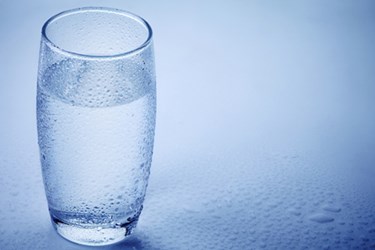Bet On Potable Water Reuse

By Kevin Westerling,
@KevinOnWater

A cost comparison of new water sources bodes well for water reuse.
When demand exceeds supply, where do you get new water? Whatever your various options — water reuse, desalination, imported water, conservation, etc. — cost is likely to be a deciding factor, if not the deciding factor. The WateReuse Research Foundation recently compared the cost of alternative water sources and determined that potable reuse is at least as economical as other available options. The resulting report, The Opportunities and Economics of Direct Potable Reuse (DPR), details additional benefits as well.
As a very progressive choice that is still stymied by the dreaded “toilet to tap” label, DPR is less utilized than other choices but starting to gain ground. Texas and New Mexico have DPR facilities, and more are in the works throughout the drought-plagued, West. The following research facts and figures, compiled for the WateReuse Research Foundation by Dr. Robert S. Raucher of Stratus Consulting and Dr. George Tchobanoglous of the University of California, may convince you that DPR is a plunge worth taking.
All Options Considered
There are many variables at play when comparing costs — the size and scale of the facility, local regulations, and site-specific conditions, to name a few — but it’s fair to compare new water sources in terms of applicable treatment costs and the trends associated with different schemes. Let’s look at the more popular options first, then see how DPR stacks up.
Conservation is an outlier in that there are no “new” costs for the physical treatment of water, so it is natural that it’s the lowest-cost alternative. “At this point in time, however, the ‘low-hanging fruit’ of water-use reduction has been harvested,” says the Foundation report, adding that additional curtailments from the public will be more difficult — and costly. Utility expense for the report was based on a number of Conservation Master Plans in practice in California. The cost range was $465 to $980 per acre-foot (AF), with an average of $775/AF. It should be noted, however, that conservation reduces utility revenues due to lower consumer usage/ sales figures, often resulting in unpopular rate hikes. The consumer also foots the bill in other ways, for example, through the purchase of water-saving appliances or the need to replace dead lawns.
Nonpotable reuse (NPR) treats water to standards that are “fit for purpose” (generally agricultural or industrial), rather than fit for human consumption. Costs are highly variable due to whether a new treatment plant and/or “purple pipe” conveyance system must be built, and how far the water will be carried. This results in a very broadly estimated cost range of $310 to $1,960/AF, but utilities can assume the higher end if the proper infrastructure is not already in place.
Imported water seems like a reasonable alternative now, with costs ranging from $850 to $1,300/AF, but it comes with a big asterisk. Over the past five years, the cost of imported water has increased 9 to 10 percent annually and therefore may exceed $2,000/ AF by 2020. Besides that red flag, imported water is a highly unreliable and unsustainable resource going forward.
Seawater desalination is just plain expensive, generally $2,000 or more per AF, according to the WateReuse Research Foundation report. The listed range is $1,500 to $2,300/AF, and that doesn’t include conveyance to the potable water supply system, which can add $700 to $1,000/AF.
Brackish groundwater desalination estimates are cheaper than seawater desalination, but are calculated on very limited data. The low end of the $930 to $1,290/ AF range is based on actual costs at the Chino, CA, desalting facility, which benefits from a “relatively inexpensive” brine line. If a low-price concentrate management option isn’t available, costs would likely exceed even the high end of the estimate, which is derived from the California Department of Water Resources (2003) and, according to the report “may be understated.” Regulations related to inland concentrate management are also cited as a “significant cost factor” and aren’t built into the given estimates.
Indirect potable reuse (IPR) is estimated in the study to cost about the same as direct potable reuse. Both are listed at $820 to $2,000/AF, which includes the cost of conveyance ($120/AF). However, IPR has the drawback of needing a suitable surface water or groundwater environmental buffer. Depending on the landing spot, conveyance costs can be driven well past the allotted $120/AF. The environmental buffer also creates other potential issues, such as competing claims on water rights, contamination of the reclaimed water, and the requirement for ongoing monitoring and O&M.
Direct Potable Reuse: Cost And Benefits
As stated, DPR resides in the $820 to $1,200/AF range, lower or on par with other options. Again, conveyance is included in the cost, but there is no potentially hard-to-reach environmental buffer to consider. Instead, reclaimed water would be delivered directly to the drinking water treatment facility for further treatment or simply for distribution. Because less piping and pumping are generally required, DPR is potentially much less expensive than IPR by reducing both capital and O&M costs, while also reducing greenhouse gas emissions.
Potable reuse is not a cure-all, however. None of these solutions are. It is recommended that DPR and/or IPR be practiced alongside other efforts, particularly conservation, to provide adequate supply for a growing population. With wastewater as its source, potable reuse provides an endless, climate-resistant supply for any locale. That blessing is also its curse, unfortunately, as the “yuck factor” remains for many communities. Education and outreach will continue to be important for public acceptance, but municipalities can at least be confident that adopting potable reuse is a smart economic decision.
